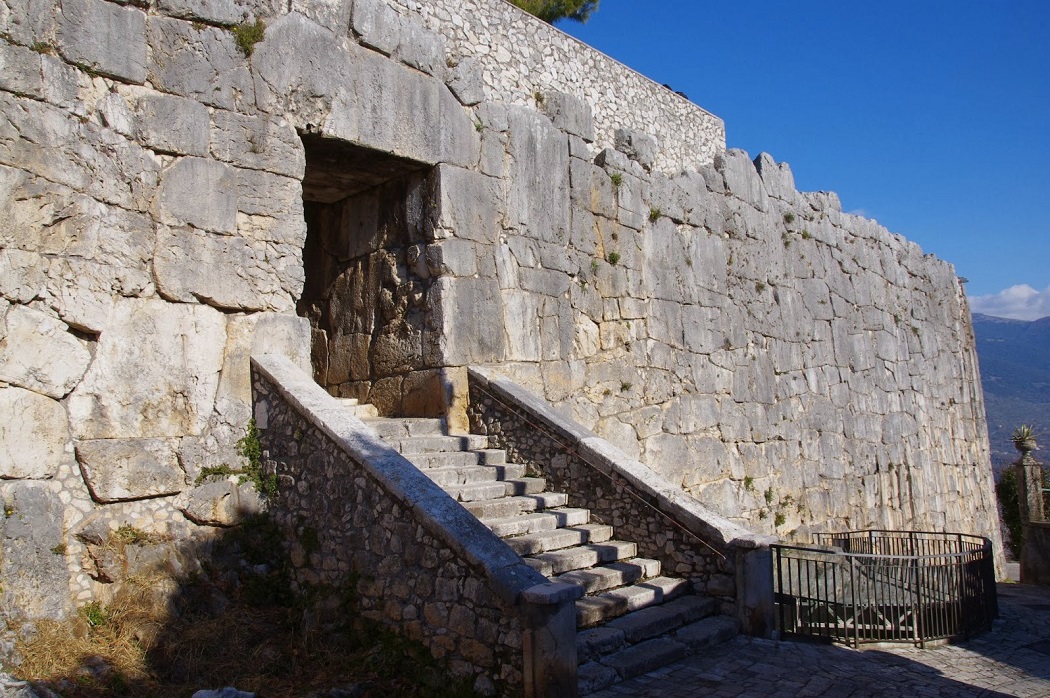The history of Alatri begins with its acropolis surrounded by walls made of megaliths, i.e. large rocks positioned dry with perfect joints on top of each other.
According to the legend, Alatri and other cities of southern Lazio were founded by the God Saturn in the fifteenth century BC.
Others stories are connected to the people of the Pelasgians (pre-Greeks) around the VIII-VII century BC.
Other authors trace the walls to the people of Ernici and date to the fourth century BC.
The walls are called polygonal or cyclopean walls, this last name is related to an ancient people that they say had an imposing stature.
Some of its boulders exceed the length of 3 meters with a height of two .
The walls of Alatri are about 4 km long and in some places reaches a height of 15 meters. A section of wall used to support the acropolis which was accessed through two doors.
The lintel of the main door is more than five meters long, 1.60 meters high and 1.65 meters deep and is considered the heaviest megalith in the Italian peninsula.
On the lower door are carved three phalluses and along the wall there are three niches whose function is unknown.
During the Roman period, and the middle ages the walls were expanded to have five input ports: Port St. Peter Port Carried, Porta San Nicola, Porta San Francesco and Porta San Benedetto which is the only one that preserves a lintel structure.








Follow us